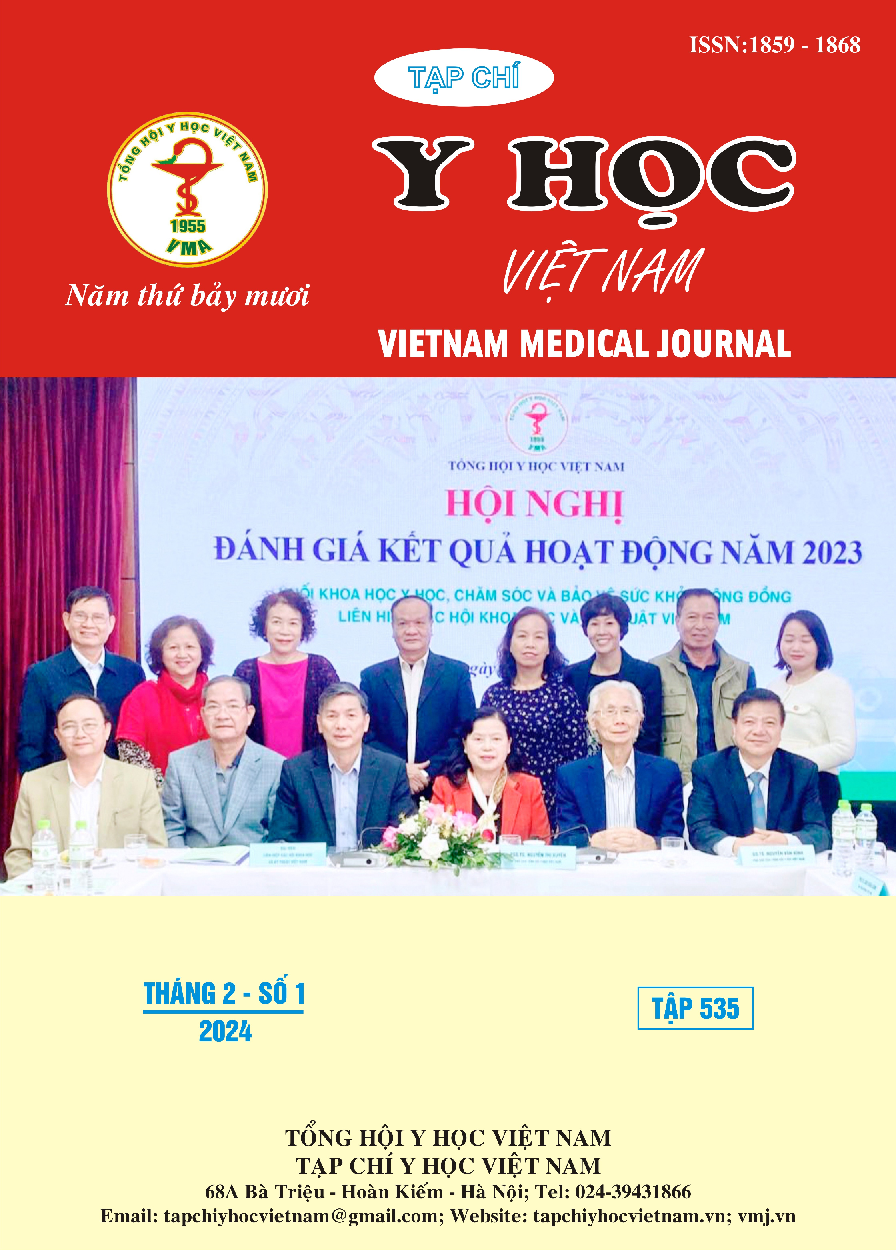EVALUATION OF THE RESULTS OF TREATMENT OF INDIRECT CAVERNOUS SINUS DURAL ARTERIOVENOUS FISTULA USING ENDOVASCULAR THERAPY
Main Article Content
Abstract
Objective: Evaluate the results of treatment of indirect cavernous sinus dural arteriovenous fistula by endovascular intervention. Methods: Cross-sectional study on 54 cases of indirect cavernous sinus dural arteriovenous fistula (iCS-DAVF) treated with endovascular intervention at University Medical Center from October 2018 to April 2020. Results: Mean age was 53.7 ± 15.6 years. Red eyes symptoms account for a high rate: 44 cases (81.48%), 23 bulging eyes (42.6%), 23 cases with reduced vision (42.6%). The most common type of fistula in this study is iCS-DAVF type D (accounting for 77.8%) according to the Barrow classification, Type IIa according to the Cognard classification (accounting for 44.4%). Interventional access from veins: inferior petrosal sinus accounts for 77.77%, ophthalmic vein accounts for 5.55%. There is no correlation between the approach and the results immediately after intervention with p> 0.05. Clogging material coils was used in 47 patients (81.5%), glue liquid - Onyx – coils in 6 patients (7.4%), and ballon in only 1patient (1.9%). Complete leak rate is 81.5%, nearly complete is 18.5%. Deaths rate is 0%. Conclusion: Endovascular intervention is an effective treatment method for iCS-DAVF, which should be applied at facilities with adequate diagnostic equipment and experienced vascular intervention teams.
Article Details
References
2. Kirsch M, Henkes H, Liebig T, et al. Endovascular management of dural carotid-cavernous sinus fistulas in 141 patients. Neuroradiology. 2006;48(7): 486-490. doi: 10.1007/ s00234-006-0089-9
3. Awad IA, Little JR, Akarawi WP, Ahl J. Intracranial dural arteriovenous malformations: factors predisposing to an aggressive neurological course. J Neurosurg. 1990;72(6):839-850. doi:10.3171/jns.1990.72.6.0839
4. Lucas CP, Zabramski JM, Spetzler RF, Jacobowitz R. Treatment for intracranial dural arteriovenous malformations: a meta-analysis from the English language literature. Neurosurgery. 1997;40(6):1119-1130; discussion 1130- 1132. doi: 10.1097/ 00006123-199706000-00002
5. Chung SJ, Kim JS, Kim JC, et al. Intracranial dural arteriovenous fistulas: analysis of 60 patients. Cerebrovasc Dis Basel Switz. 2002;13(2):79-88. doi:10.1159/000047755
6. Barber SM, Rangel-Castilla L, Zhang YJ, Klucznik R, Diaz O. Mid and long-term outcomes of carotid-cavernous fistula endovascular management with Onyx and n-BCA: experience of a single tertiary center. J Neurointerventional Surg. 2015;7(10):762-769. doi:10.1136/neurintsurg-2014-011266
7. Meyers PM, Halbach VV, Dowd CF, et al. Dural carotid cavernous fistula: definitive endovascular management and long-term follow-up. Am J Ophthalmol. 2002;134(1):85-92. doi:10.1016/s0002-9394(02)01515-5
8. Kim DJ, Kim DI, Suh SH, et al. Results of transvenous embolization of cavernous dural arteriovenous fistula: a single-center experience with emphasis on complications and management. AJNR Am J Neuroradiol. 2006;27 (10):2078-2082.


